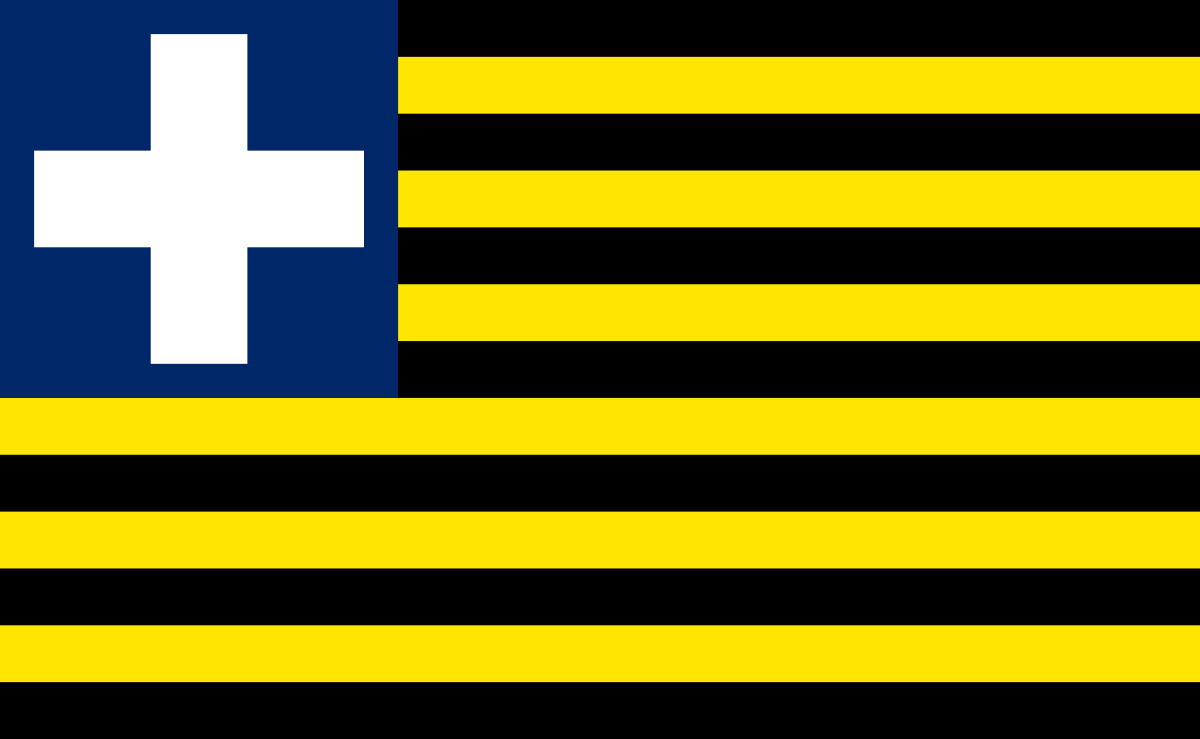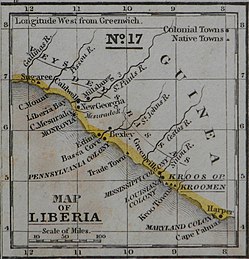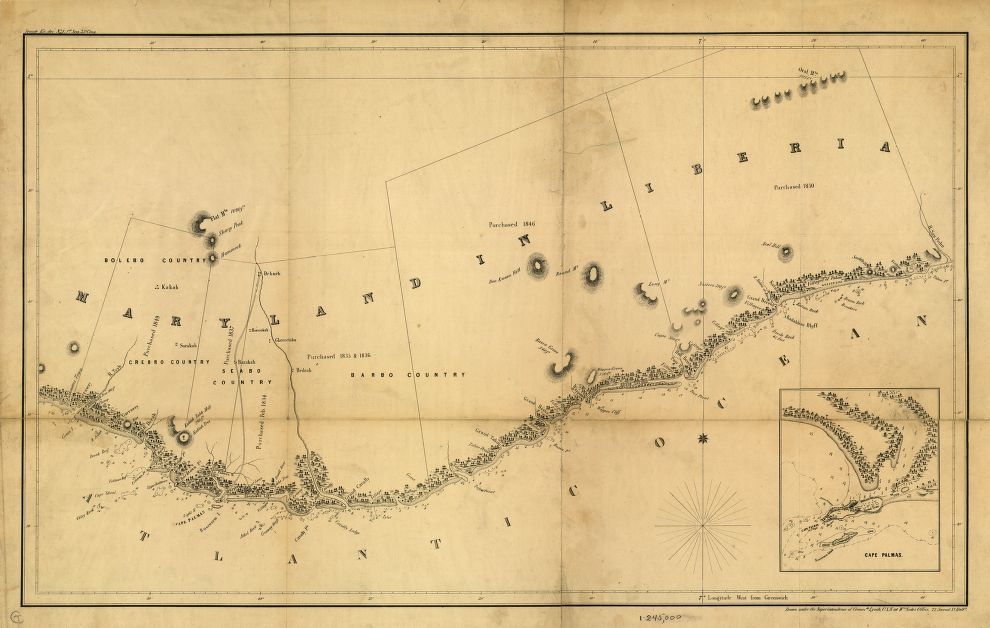Did you know that the Republic of Maryland was an independent colony that existed in Liberia, Africa from 1834 to 1854. Also known as the Independent State of Maryland, Maryland-in-Africa, and Maryland in Liberia, it was founded by the Maryland Colonization Society with the aid of the American Colonization Society and financial support of the State of Maryland.
 The colonization societies were established in the early 1800s to address the prevailing view that free people of color could not integrate into U.S. society. The free Black population had grown from 60,000 in 1790 to 300,000 by 1830. Slaveowners feared that free Blacks might help slaves to escape or rebel. In addition, many white Americans believed that African Americans were inherently inferior, and, therefore, should be relocated. The Colonization Society’s purpose was to remove Free Blacks from the country.
The colonization societies were established in the early 1800s to address the prevailing view that free people of color could not integrate into U.S. society. The free Black population had grown from 60,000 in 1790 to 300,000 by 1830. Slaveowners feared that free Blacks might help slaves to escape or rebel. In addition, many white Americans believed that African Americans were inherently inferior, and, therefore, should be relocated. The Colonization Society’s purpose was to remove Free Blacks from the country.
By the 1820s Blacks made up almost 49 percent of the population in Maryland. Maryland had the largest population of free Blacks in the United States right up until Emancipation. Maryland legislators continued to institute new laws to regulate and restrict the movement and activities of both free blacks and slaves.
 After Nat Turner’s Rebellion in Virginia in August 1831 many white southerners blamed free blacks in Virginia for inciting Turner and other slaves. In December 1831, the Maryland State legislature appropriated an annual $10,000 for the following 26 years to transport free blacks and ex-slaves from Maryland to Africa. That act appropriated funds of up to $20,000 a year, up to a total of $260,000, in order to commence the process of African colonization, a considerable expenditure by the standards of the time.[9][10] The legislature empowered the Maryland State Colonization Society (MSCS) to carry out its purpose… “the object of Colonization is to prepare a home in Africa for the free colored people of the State, to which they may be removed…”
After Nat Turner’s Rebellion in Virginia in August 1831 many white southerners blamed free blacks in Virginia for inciting Turner and other slaves. In December 1831, the Maryland State legislature appropriated an annual $10,000 for the following 26 years to transport free blacks and ex-slaves from Maryland to Africa. That act appropriated funds of up to $20,000 a year, up to a total of $260,000, in order to commence the process of African colonization, a considerable expenditure by the standards of the time.[9][10] The legislature empowered the Maryland State Colonization Society (MSCS) to carry out its purpose… “the object of Colonization is to prepare a home in Africa for the free colored people of the State, to which they may be removed…”
The agents of the Maryland State Colonization Society had trouble recruiting emigrants. From 1831 to 1851, only 1,025 emigrants were sent to Liberia while the number of recorded manumissions in Maryland during the same period was 5,571. Despite support in powerful quarters, many people saw no value in the program and questioned the state financial support. In 1852, twenty years of state appropriations supporting the Republic of Maryland ended.
Maryland tried to limit the number of free Blacks with an 1858 statute setting the age limits on manumission at forty-five years of age, and requiring freed slaves to be self-sufficient. The statute required freed slaves to leave the state immediately upon gaining their liberty. After the 1859 raid on the U.S. arsenal at Harper’s Ferry, (then Virginia) by white abolitionist John Brown, an 1860 law banned the practice of manumission by deed or will completely. In keeping with the state’s desire to reduce its free black population, the statute also contained a provision to allow free blacks to petition state courts to renounce their freedom and choose masters.
Those freed slaves who did emigrate to the Republic of Maryland in Liberia were unprepared for the conditions and sparsely provisioned. Many died from disease. By 1856, Maryland in Liberia found itself in a war with the neighboring native peoples over trade policies and territory. The new nation was forced to request military aid from the Republic of Liberia, which had formed in 1847 from the American Colonization Society’s settlement. After peace was restored, in 1857, Republic of Maryland in Liberia citizens voted in favor of annexation to Liberia, becoming Maryland County. The Maryland Colonization Society continued to send a few emigrants to Liberia until its last sponsored expedition took place in 1862.

